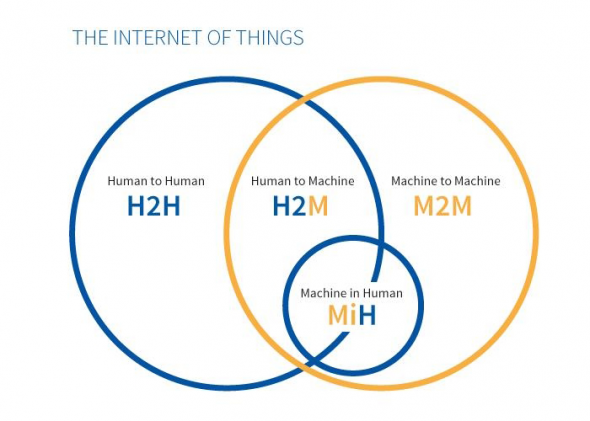
If you’re looking for a definition of the IoT and all it entails to get an understanding of the current ‘buzz’ then don’t expect to gain any real clarity. Wikipedia will tell you that IoT ‘refers to uniquely identifiable objects and their virtual representations in an internet like structure’. Gartner will tell you ‘it’s the network of physical objects that contain embedded technology to communicate and sense or interact with their internal states or the external environment’. Just like the whole makeup of the IoT, we like to make it appear ‘complicated’.
In reality, the Internet of Things is simply what we, the communications providers, have been doing for years. The only real difference is that we’re now connecting ‘things’ rather than ‘people’ to the Internet, and yes all the usual rules apply like security and reliability, so what’s all the fuss about?
Understanding the make-up of the IoT is important when selecting which area is right for your business to capitalise on, which is not so straight forward as new terminology and descriptions seem to emerge almost weekly, and certainly depends on at which point there may or may not be ‘human intervention’ (For example: Using a smart tablet to read data an IoT application or ‘wearable technologies’)
From the descriptives on the diagram, you can see why the focus for the initial growth and analytical predictions has been very much focused on Machine to Machine (M2M) applications as there are certainly plenty of ‘things’ to be connected. With volume predictions of growth varying depending on which analysts you follow; by 2020 Gartner predict 20 billion; IDC 30 Billion and Cisco 50 Billion.
In reality much of this is not ‘new’, here at B&B electronics we will happily tell you we have been connecting devices for the past 20 years. They may have been serial ports within an industrial manufacturing plant delivering data in a wired environment but nonetheless connecting devices we have been and we are certainly not alone here. So, what’s changed? The growth of wireless has played a significant role in the ability and speed to connect ‘things’, our acceptance of using cloud based platforms has added to the drive (albeit predominantly via our consumer applications and the huge growth in smartphones and tablets but that’s another debate). Add to this the significant changes in availability and costs of bandwidth and they have all added to the mix.
So why are there so many new IoT/M2M companies and specialists emerging and why are the traditional communications and IT providers not taking up the ride? In a recent survey by Beecham Research, the second biggest priority in delivering M2M projects was deemed to be the Integration with IT, second only to security! It is the IT integration that is holding back the real growth of M2M applications.
Integration with Legacy Systems
Why should the data not be delivered to and alongside the existing infrastructure? Why are we trying to ‘get around’ the legacy IT system by using cellular mobile connections? Simple, to avoid the integration to the legacy infrastructure. In reality the answers we get to this everyday are; “It’s less complicated”, “It will stall the project if we have to integrate to the existing”, “The project becomes too large if we have to integrate to the enterprise system” and so the list goes on and inevitably we spend our time building new stand alone infrastructure for M2M applications. How ironic when one of the M2M applications we see in growth, is out of band resilience for broadband and fixed line services for the enterprise network.
To us as a supplier of hardware and communications devices this seems madness, this is good old fashioned integration and yet so few IT and communications resellers are active in this space, surprising indeed when the end users deploying M2M solutions are existing customers looking to add more remote visibility, management and diagnostics to assets in the field. Surely an opportunity to gain new revenue streams from an existing customer ?!
Ironically the Beecham Research also identified the degree of usage of connectivity technologies in existing deployed IoT / M2M solutions. Here are their findings...
The point that this research generated was that ALL connectivity types need to be supported for IoT/M2M and increasingly within a single solution.
So if you are a fixed line communications service provider why wouldn’t M2M be a part of your offer to the customer, chances are they are buying new fixed line services to run M2M applications over it today.
If you are serious about looking at the revenue opportunity M2M presents to your existing business, then look at the real application stories being delivered today. You will see that the only potential difference is that you need to deliver some intelligence to the edge device and then simply work out how and what you are going to deliver the data to, albeit in a two way, secure and reliable fashion. It is not really that complicated at all especially if you choose the right partners to work with.

